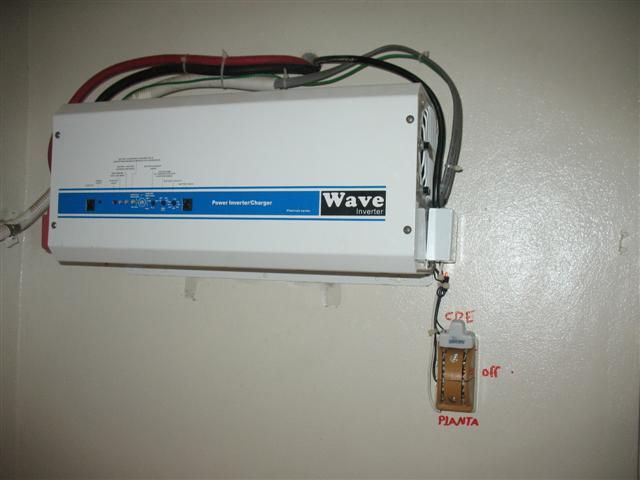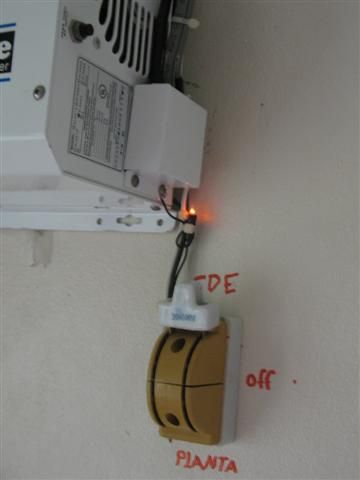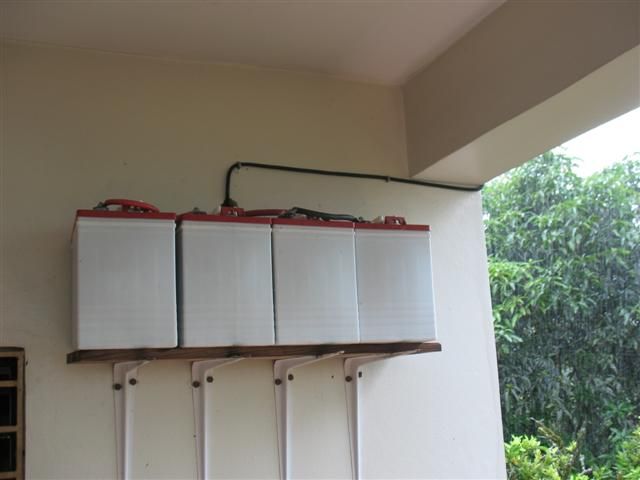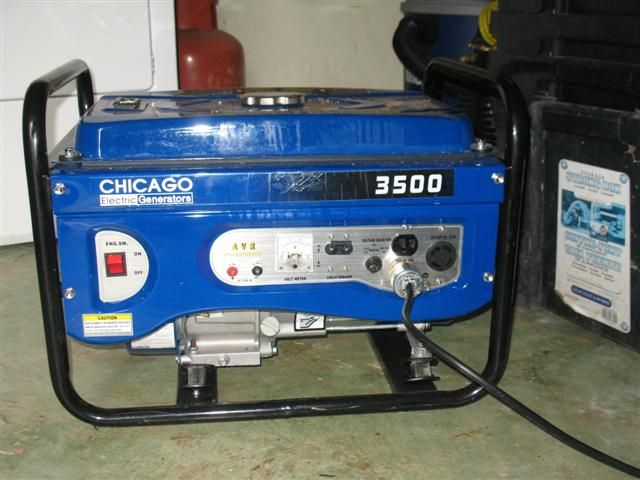Got your attention, huh? Really the title should be "When the Inverter Runs Out of Battery."
We're fortunate to live in a "24 Hour Zone." :cheeky: That means we have some power during any given "24 Hour" period. Seriously, we lose Edenorte power occasionally. No problem, the inverter picks up the slack. We have everything in the house except water heater, and 220v water pump and bedroom a/c running off the 3500w inverter and 4 batteries.
It works well. However, on 6 occasions in 2 years the power has been off long enough to run out of battery. For some reason this has been going into the evening. On these occasions I've cranked up the portable 3500w gas genset (same size as the inverter) I've had, plugged in a mass of HD extension cords and house gang plugs/ surge suppressors/extension cords, disconnect electronics, plug them back into the mass of wires and gang plugs and run lamps and electronics. It works as a temporary solution but rather cumbersome and we can't run everything as we want. It's a hassle that works semi-OK. (Yes, yes, I know genset and inverter power is dirty and may damage sensitive electronics...)
So this morning I had our electrician come out and install a much simpler and thorough solution to maximize the use of the genset on the rare times we lose Edenorte power long enough to drain the inverter batteries. I hardwired a cord to temporarily connect the inverter to the generator. When the batteries get nearly drained and the power is still out, I simply move the genset 4 feet, plug a custom cord into it, start the genset and flip a switch next to the inverter, and...VOILA...whole house power and battery charging from a simple portable genset for temporary emergency use.
While the generator is running, it powers the house and charges the inverter batteries. It should take about 4 hours to fully charge the 4 batteries. When they are charged I can shut the genset off and just use batteries.
How it works-
This is the inverter and switch:

The genset is connected to the "power in" side of the inverter. The switch allows us to break the connection when the power is "normal", otherwise the wire is hot in the out building where the generator lives. The large black wire next to the grey on the inverter goes to the genset.
Closeup of the switch:

Note the small light. It came from a spare wall switch with lighted toggles . When the street power is on, it's lit. No street power, no light. This allows us to know when the street power comes on when the generator is on, otherwise we wouldn't know.
. When the street power is on, it's lit. No street power, no light. This allows us to know when the street power comes on when the generator is on, otherwise we wouldn't know.
Opposite side of the wall from the inverter, the wire goes to the genset in an outbuilding.

The outbuilding with the wire to the house plugged into the genset:

The genset runs many hours on one tank of gasoline and is surprisingly quiet. The room is well ventilated.
The drill will be: when we get the "low battery" warning on the inverter, I'll go to the outbuilding, drag the genset 4 feet, plug the wire in, crank the genset on, go to the inverter, flip the switch to "Planta"...and have temporary power for the house and charge the inverter batteries.
Installed just in time for Irene!
Total cost: RD$2500.
A simple solution for not a lot of money.
We're fortunate to live in a "24 Hour Zone." :cheeky: That means we have some power during any given "24 Hour" period. Seriously, we lose Edenorte power occasionally. No problem, the inverter picks up the slack. We have everything in the house except water heater, and 220v water pump and bedroom a/c running off the 3500w inverter and 4 batteries.
It works well. However, on 6 occasions in 2 years the power has been off long enough to run out of battery. For some reason this has been going into the evening. On these occasions I've cranked up the portable 3500w gas genset (same size as the inverter) I've had, plugged in a mass of HD extension cords and house gang plugs/ surge suppressors/extension cords, disconnect electronics, plug them back into the mass of wires and gang plugs and run lamps and electronics. It works as a temporary solution but rather cumbersome and we can't run everything as we want. It's a hassle that works semi-OK. (Yes, yes, I know genset and inverter power is dirty and may damage sensitive electronics...)
So this morning I had our electrician come out and install a much simpler and thorough solution to maximize the use of the genset on the rare times we lose Edenorte power long enough to drain the inverter batteries. I hardwired a cord to temporarily connect the inverter to the generator. When the batteries get nearly drained and the power is still out, I simply move the genset 4 feet, plug a custom cord into it, start the genset and flip a switch next to the inverter, and...VOILA...whole house power and battery charging from a simple portable genset for temporary emergency use.
While the generator is running, it powers the house and charges the inverter batteries. It should take about 4 hours to fully charge the 4 batteries. When they are charged I can shut the genset off and just use batteries.
How it works-
This is the inverter and switch:

The genset is connected to the "power in" side of the inverter. The switch allows us to break the connection when the power is "normal", otherwise the wire is hot in the out building where the generator lives. The large black wire next to the grey on the inverter goes to the genset.
Closeup of the switch:

Note the small light. It came from a spare wall switch with lighted toggles
Opposite side of the wall from the inverter, the wire goes to the genset in an outbuilding.

The outbuilding with the wire to the house plugged into the genset:

The genset runs many hours on one tank of gasoline and is surprisingly quiet. The room is well ventilated.
The drill will be: when we get the "low battery" warning on the inverter, I'll go to the outbuilding, drag the genset 4 feet, plug the wire in, crank the genset on, go to the inverter, flip the switch to "Planta"...and have temporary power for the house and charge the inverter batteries.
Installed just in time for Irene!
Total cost: RD$2500.
A simple solution for not a lot of money.

